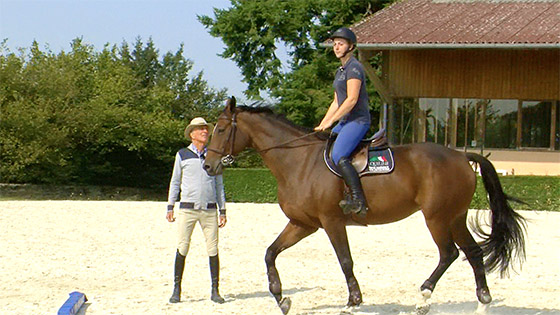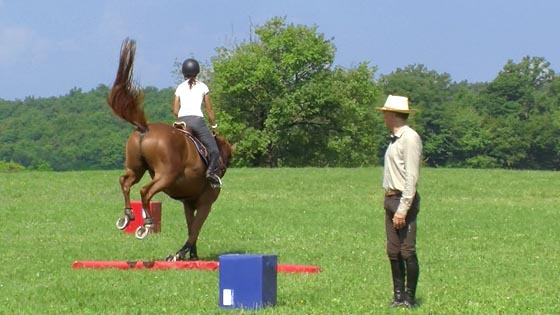Basic exercise to stay loose and calm

One is already aware of the importance of the rider’s eyes as a key player for his/her physical and mental performance. It is well known that the large angle view is one of the most effective ways to keep you in an upright position and connected with your horse.
One is already aware of the importance of the rider’s eyes as a key player for his/her physical and mental performance. It is well known that the large angle view is one of the most effective ways to keep you in an upright position and connected with your horse.
The next step in the rider’s progression is what Michel calls the perpendicular gaze or sideways view. It has numerous benefits. The exercise is for the rider to look either to the right or to the left compared to the axis of movement of the horse. As Michel explains in this video, the sideways view is an incredible tool that allows the rider to be in harmony with his feelings and also with the horse’s movements. For riders who find it difficult to take their eyes off the ground - especially during transitions or when jumping, and who consequently lean forward - this tip will be life changing. To look sideways will de-activate the negative reflex of looking down. When this technique is well utilized, it allows riders who have a tendency to become stiff and stressed when approaching a jump, to regain softness and confidence in their position and aids.
It goes without saying that the sideways view is a training exercise. Once the rider has mastered this technique, a quick glance to the right or to the left will allow the rider to regain softness and relaxation in his/her position, as well as being in harmony with the horse.
This exercise is linked to the sheet M2 of the booklet Training program 1

